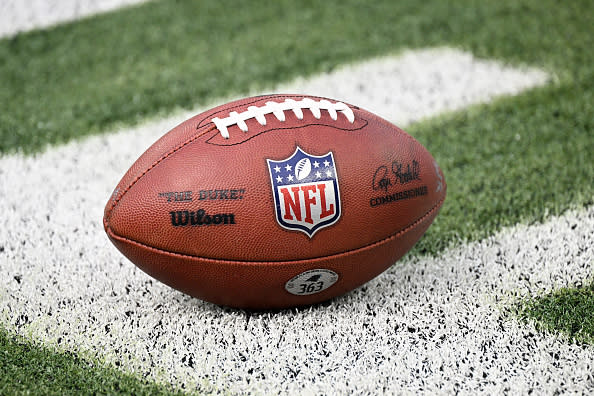NFL: A New Study Shows Grass Is Safer Than Turf
Super Bowl contests draw attention to the field these titanic conflicts are fought on. Is that turf artificial, natural, or a hybrid? You most likely won’t notice a change on your large-screen TV.
NFL players, however, have varied opinions on the controversy over real vs fake grass.
Football stadiums have been using green replacements in place of green grass for years, but Mother Nature may be regaining some ground. The adjustment is being made in part due to player ailments.
In the last 50 years, grass science has made significant advancements. Similar advancements have also been made in the production of artificial turf. The new material, according to supporters, is kinder to the body than what came before.
NFLPA president @JCTretter specifically cited Panthers’ turf condition during Christmas Eve game vs. Lions in renewing call for grass fields across the NFL. pic.twitter.com/jBWYF01HZg
— Joe Person (@josephperson) April 20, 2023
Nevertheless, there are several varieties of grass goods. Some are characterized as rapid, while others are described as sluggish, hard, or soft. Additionally, teams do not often agree on the ideal artificial playing surface.
17 of the 32 NFL teams play their home games on artificial surfaces in some capacity. By declaring that Nashville’s Nissan Stadium will switch from grass to artificial turf, the Tennessee Titans made some progress.
.@NFLPA dropped data that shows grass fields had a smaller rate of lower extremity, non-contact injuries compared to artificial turf in 2022. Rates were similar in 2021, but union president @JCTretter called that an "outlier." Story w/ NFL response: https://t.co/C3VHcFJTLB
— Kevin Seifert (@SeifertESPN) April 20, 2023
But perhaps things are changing.
The Super Bowl of 2023 is being held on the genuine article, a hybrid Bermuda grass called Tahoma 31 that was cultivated locally just outside of Phoenix.
A transition back to genuine turf may be sparked by the Super Bowl injury in 2022 and a grass seed manufacturer’s push to cover the expenses of stadiums switching from artificial to natural turf.
In todays no kidding moment, something every #AT in soccer and football has been saying for 15 yrs
Latest NFL injury data fuels grass vs. turf debate https://t.co/1WHxewRx8H
— Sports Scientist (@ScientistSports) April 20, 2023
A New Study Shows Grass Is Safer Than Turf
Odell Beckham Jr. of the Los Angeles Rams tore his left ACL in the second quarter of the Super Bowl in 2022, which was played on artificial grass.
Concerns were raised regarding the location, the Rams’ SoFi Stadium. This is due to the fact that Beckham’s injury was not brought on by a tackle or contact.
According to data provided this week by the NFL Players Association, artificial turf saw a greater prevalence of noncontact injuries among NFL players than grass during the 2022 regular season.
NFLPA shares the latest data from 2022 which it believes shows 2021 was an "outlier" when it came to injury rates on grass vs. turf. "Now," writes Tretter, "10 of the previous 11 years show the same exact thing — grass is a significantly safer surface than turf." pic.twitter.com/khFyXyoAxn
— Jonathan Jones (@jjones9) April 19, 2023
Players have long argued that grass is preferable to artificial turf because it feels nicer underfoot and is safer. Union president J.C. Tretter observed that from 2012 to 2020, the injury rate on grass fields was lower in an essay uploaded to the NFLPA website on Wednesday. Despite the rates generally remaining the same in 2021, Tretter referred to that result as a “outlier.”
Additionally, following the 2022 Super Bowl, Kittle’s fellow edge rusher Nick Bosa of the 49ers referred to the same petition when discussing his turf-related injuries from the previous year.
He suffered a season-ending knee injury on the field at MetLife Stadium in New Jersey during San Francisco’s opening away game of that year.
In this report on turf v grass, the NFLPA specifically singled out the Panthers’ field last Christmas Eve vs Detroit (Aidan Hutchinson afterward called it “the most concrete field I've ever been on in my whole life”) as unsafe to play on. No excuse for David Tepper to not fix it. https://t.co/XAdgkKhcl9
— Reid (@The_Reid) April 20, 2023
Bosa said he didn’t feel alone: “Every player is one play away from altering their career forever.” He was. Bosa didn’t play again until 2021.
The Joint Field Surface Safety and Performance Committee meetings, which are required under the CBA, are where the same injury data is exchanged between the NFL and NFLPA, according to Miller. This data is gathered by independent specialists. The group, which includes the NFLPA’s specialists, feels that just playing on grass is not the solution to this intricate problem. Some grass fields have a lower injury rate than some artificial turf grounds, and vice versa for some artificial turf surfaces.
“Our goal is to decrease injuries on all surfaces. There are no simple answers, but we are committed to the substantial, ongoing work with the players and their expert advisors to make the game safer.”
FOR MORE SPORTS COVERAGE-
Mets Ace Max Scherzer Ejected For Sticky Substance After Inspection


